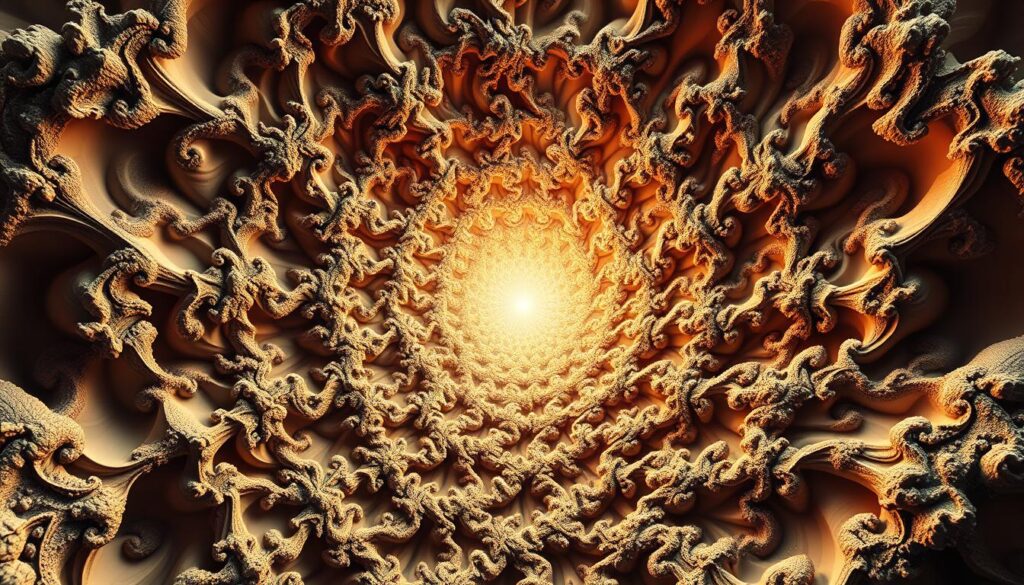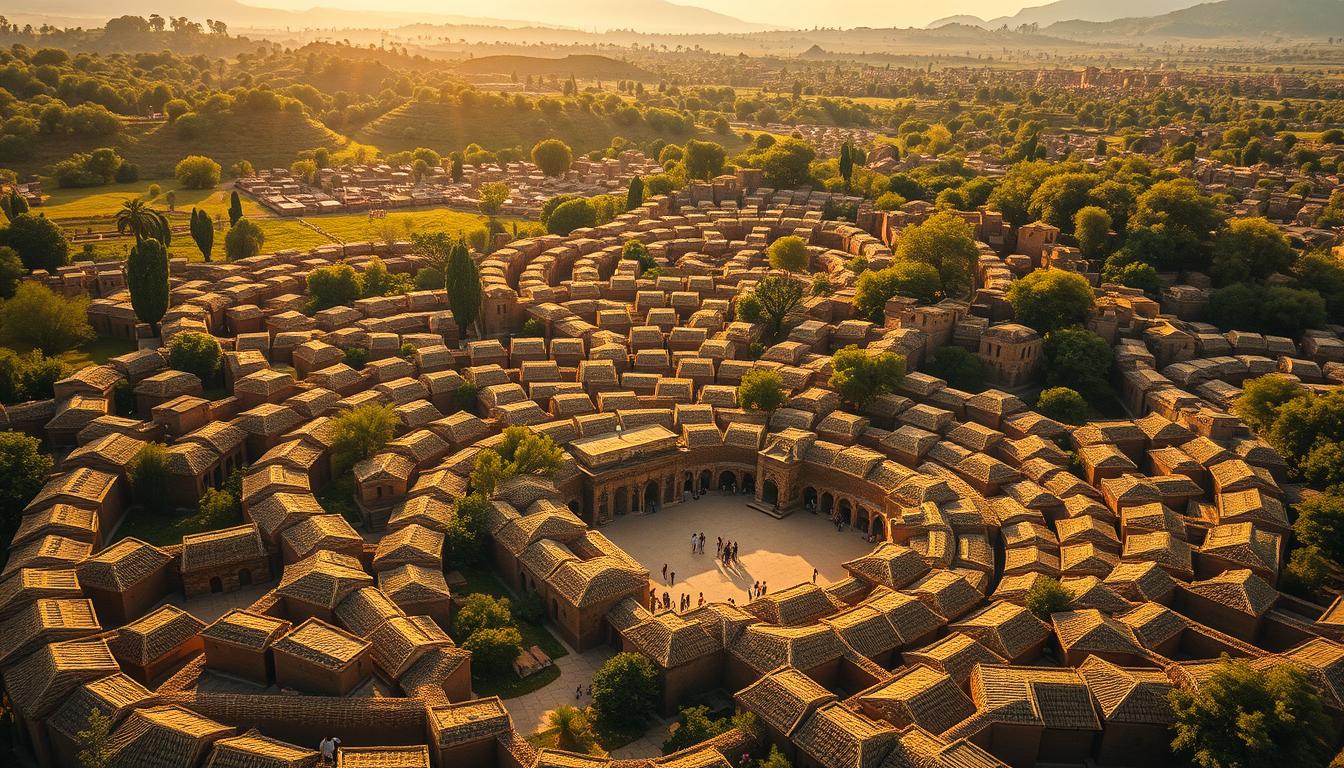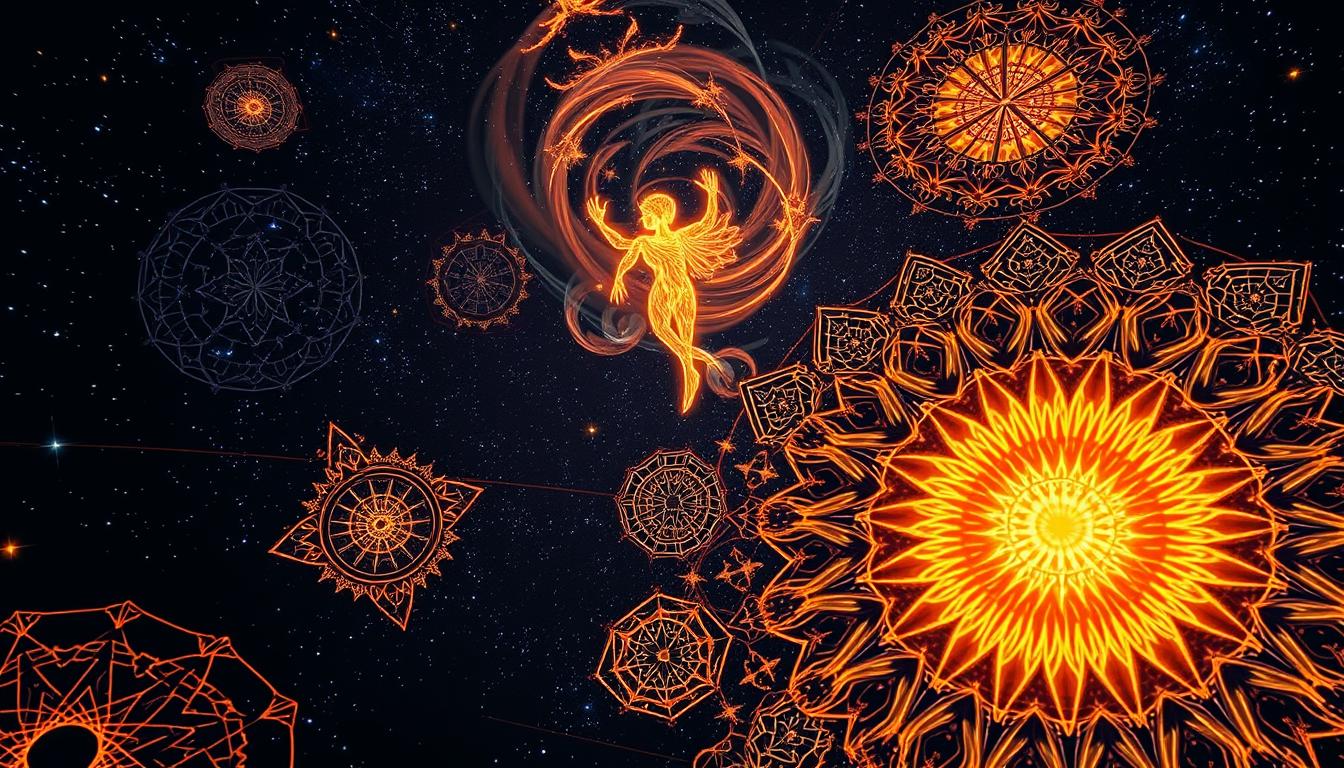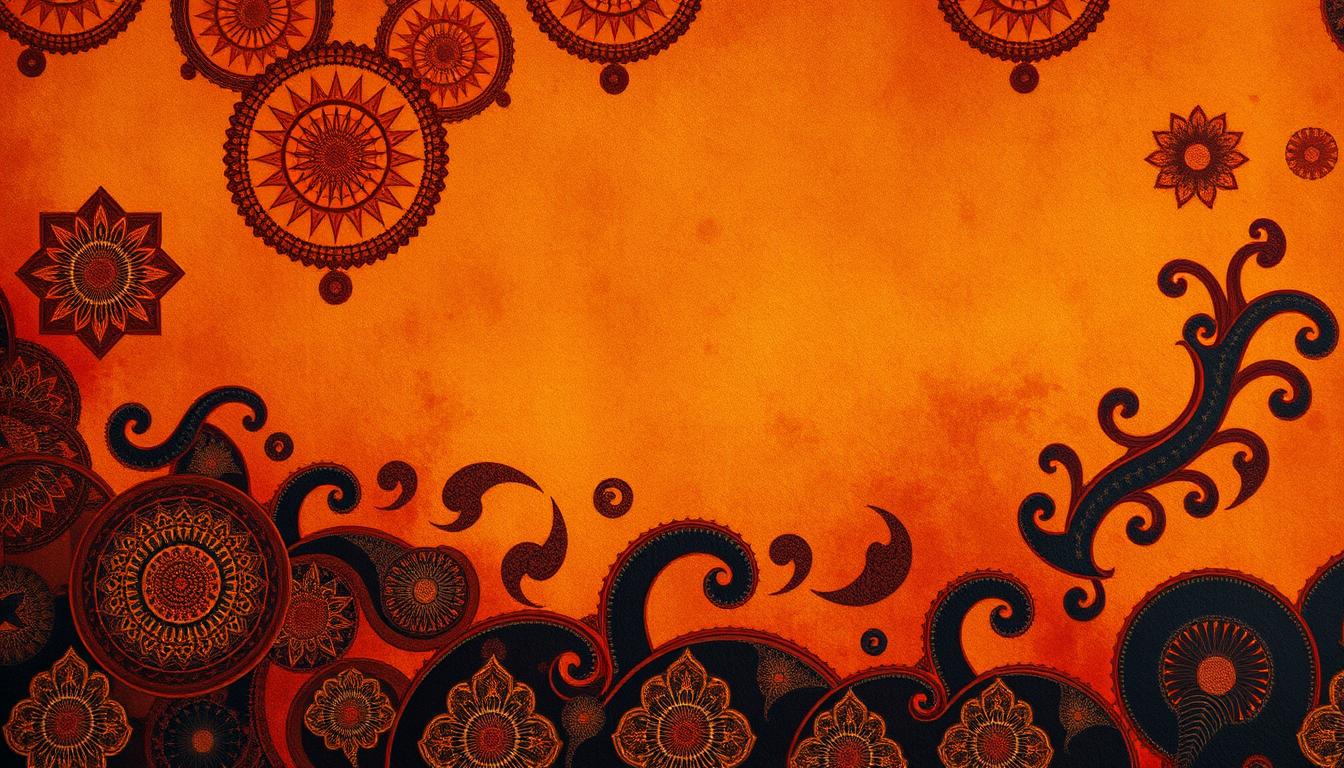The link between fractal theory and Indigenous cosmology opens up a world of exploration. Both focus on how natural patterns mirror cultural meanings. They show us that simple shapes can be found within larger ones, revealing the universe’s secrets.
This idea bridges math concepts in fractals with Indigenous cultures’ views. By looking at this crossing point, we can better understand architecture, art, and whole worldviews. It makes us see how these ideas appear in our world.
Understanding Fractal Theory
Fractal theory is about geometry that finds beauty in complex patterns. It focuses on shapes that look detailed up close or far away. This makes fractals different from regular shapes, mixing complexity and beauty in math and art.
Definition of Fractals
A fractal is a complex shape that can be divided into smaller copies of itself. This feature is called self-similarity. Fractals are not just flat; they can be curves or surfaces that repeat endlessly. They show the same pattern, no matter the size, which is what makes them fascinating.
Characteristics of Fractal Geometry
Fractal geometry has some special features:
- Self-Similarity: Patterns that repeat themselves at different sizes.
- Infinite Detail: The more you look, the more detail you find, offering endless fascination.
- Non-Integer Dimensions: Fractals have dimensions that aren’t whole numbers, which is unusual for shapes.
These traits help fractal theory explain the complex structures we see in nature.
Historical Context and Evolution of Fractals
The study of fractals began in the 17th century with mathematicians exploring odd shapes. Benoît Mandelbrot, in the 1970s, brought attention to fractals. His work has been used in computer graphics, modeling nature, and art. It shows how fractals have changed various fields, inspiring both scientists and artists.

Basics of Indigenous Cosmology
Indigenous cosmology is a mix of cultural beliefs, practices, and spiritual ideas. It explains how various indigenous groups see their existence. This view ties their identity and values to their connection with nature, their ancestors, and the universe.
Defining Indigenous Cosmology
Indigenous cosmology is about the different ways indigenous cultures see the world. It affects how they see their place in it, and their bond with the environment. Creation myths, natural events, and stories of ancestors show the importance of the cosmos in daily life.
Cultural Significance in Indigenous Cultures
The beliefs of indigenous cosmology come from old traditions. These include rituals, ceremonies, and gatherings that show its spiritual side. These practices strengthen the bond within the community and with the land. They honor ancestors and celebrate nature, passing cultural heritage to future generations.
The relationship between fractal theory and indigenous cosmology
The link between fractal theory and indigenous cosmology shows a complex mix of similarities. These similarities are found in nature and how cultures express themselves. They mirror both the physical and spiritual worlds. Indigenous designs often include elements from fractal theory. This highlights their deep understanding of nature’s complexity.
The Role of Self-Similarity in Both Concepts
Self-similarity is key in both fractal theory and indigenous cosmology. It’s seen in patterns that repeat, just like in nature. These repeating designs are not just pretty. They also carry deep meanings about life and the universe. Understanding these patterns connects people to their past. It shows the link between their beliefs and the world around them.
Architectural Expressions in Indigenous Cultures
Indigenous cultures show fractal architecture in their unique building styles. Hindu temples, for example, have detailed carvings that look like fractals. These designs are full of spiritual meaning. The temples’ dynamic designs represent life and the cosmos. This way of building is a tribute to their culture. It shows how universal patterns are seen in different indigenous traditions.
Fractal Patterns in Nature
The world around us is full of fractal patterns. They are in tall trees and the tiny shapes of snowflakes. These patterns show us the beauty and complexity of ecosystems. They help us see how everything in nature is connected.
Examples of Fractal Patterns in the Natural World
Fractals are everywhere in nature. Here are some examples:
- Trees: Trees grow branches in fractal shapes that reach up high. This helps them get more sunlight.
- Clouds: Clouds form in fractal shapes, changing but still looking alike. This shows nature’s fractals in the sky.
- Snowflakes: Every snowflake has its own intricate fractal pattern. It forms as water freezes into ice.
Connections to Indigenous Worldviews
Indigenous cultures have long understood fractals in nature. They see these patterns as signs that all life is connected. Their beliefs and stories honor nature’s designs. They teach us to live in harmony with our world.
Fractal Geometry in Cultural Expressions
Fractal geometry is key in the cultural expressions of indigenous peoples. It is seen in their art and architecture. The complex patterns show the natural world’s intricacies. They also reflect the spiritual beliefs of many communities. By looking into indigenous art and architecture symbolism, one can understand their rich cultures.
Symbolism in Indigenous Art and Architecture
Indigenous art is a strong way to show cultural identity. It’s full of fractal symbolism. Patterns in crafts, textiles, and carvings mimic nature’s repeating patterns. This shows a bond with the environment. Indigenous architecture also reflects this connection. Buildings have patterns with deep spiritual meanings. They represent the universe and human life.
Case Studies of Fractal Designs in Indigenous Structures
Some indigenous structures show clear fractal symbolism. For example, the Kivas of Puebloan cultures have fractal patterns. Their circular forms and motifs represent life’s cycles. Totem poles of Northwest Coast tribes have detailed carvings. They show nature and ancestral stories. This is fractal design at work.
Colonialism’s Impact on Indigenous Cosmology
The influence of colonialism on indigenous cultures is huge. It has changed the way their identities are seen. This is especially true for their cultural artifacts. These items are full of meanings and history. But, they’ve been misunderstood because of colonialism. Moving these artifacts from where they belong has changed what they mean. This makes it hard to see their real importance.
Fractured Identities of Indigenous Artifacts
Colonial acts have brought indigenous artifacts into museums all over the world. This has taken away their original meaning. Now, these sacred objects are seen as just old items, not important parts of indigenous life. This happens to traditional masks and tools too. Once they’re out of their cultural setting, they lose what they’re really about.
The Role of Colonialism in Misinterpretations
Misunderstandings come from more than just moving these objects. They also come from the stories told about them. Colonizers often saw indigenous ways as less advanced. This changed how people understand these artifacts. It has made it hard for indigenous peoples to connect with their roots. By putting these artifacts back into their context, we get a more true view of indigenous beliefs.
Modern Implications of Fractal Theory
Modern science explores fractal theory to understand complex systems better. Fractal geometry helps researchers find patterns in different areas. This shows how important fractals are in technology and nature.
Fractals in Science and Technology
Fractal geometry is used in many fields like biology, physics, and computer science. It helps create algorithms for image compression and improve satellite communications. In biology, it makes it easier to study things like tree branches and blood vessels. This leads to new developments in medical technology.
Applications in Understanding Ecosystems and Cultures
Fractals are key in studying ecosystems. They show the complex relationships in biological communities. Researchers use fractals to look at how populations spread and how resources are used. This helps us understand ecosystems and cultures better. It shows us how communities organize and adapt to their surroundings.
Comparative Analysis of Worldviews
Exploring worldviews shows how people and cultures see reality differently. Comparing the fractal view with traditional views highlights this. While traditional views are straightforward and simple, the fractal view sees life as complex and connected. This idea is similar to many native cultures.
Fractal Perspective vs. Traditional Views
The fractal approach helps us see patterns in nature and society. It shows how small parts mirror bigger systems, like in indigenous beliefs. Traditional views simplify things, preferring clear stories. But, the fractal view dives into deeper meanings, making existence richer.
Interpreting Reality through Different Lenses
Seeing reality via a fractal lens reveals a complex tapestry, where each part matters to the whole. Traditional views might miss this complexity, aiming for simplicity instead. Comparing worldviews helps us understand how different views affect our beliefs and actions. It teaches us to value cultural differences more.
Conclusion
This exploration has shown the deep ties between fractal theory and indigenous cosmology. We’ve seen how they connect in understanding math and diverse cultural stories. The fractal patterns echo beliefs and tales in indigenous cosmology. This intersection shows us where art, science, and spirituality come together. These links reveal the world’s beauty and how different cultures see their existence.
Understanding these connections helps us value both fractal theory and indigenous cosmology more. By seeing how they link, we invite more thought on their shared impact on our view of reality. It’s key to support the role of indigenous insights in science today. We must make sure their voices are heard and respected.
Looking into fractal theory and indigenous views shows us the importance of the patterns that shape our world. These ideas urge us to see things in new ways, bringing cultures together to understand life’s web. As we learn more, the mix of these fields could lead us to see nature and humans in a whole new light.



